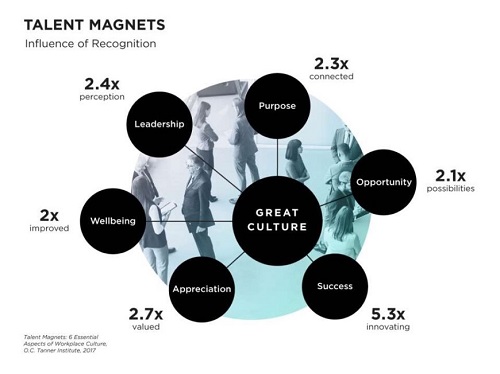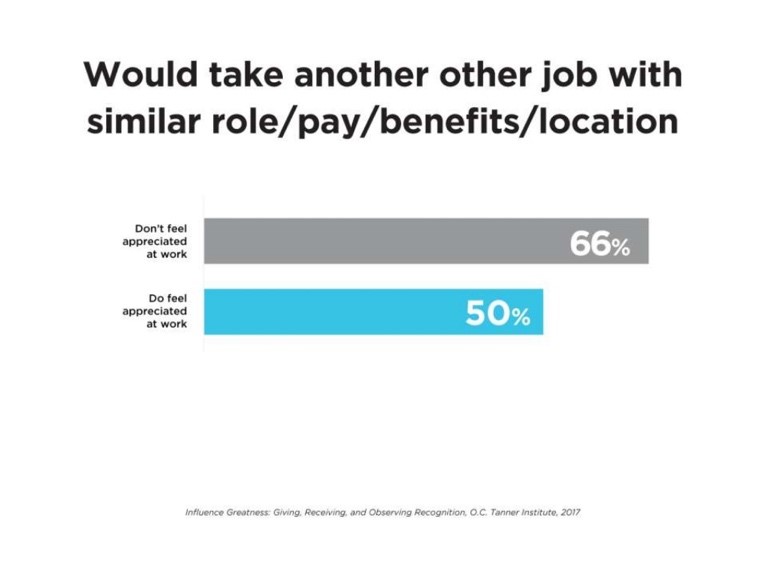
Build a compelling case by answering these seven common questions from executives and leaders

If you’re looking to improve your workplace culture, employee recognition can help boost engagement, attract and retain top talent, and increase innovation. Build a business case for employee recognition by answering these common questions from executives and leaders.
1. Why do we need to improve our workplace culture?
A good company culture is critical to a company’s success. Organisations with great workplace cultures are:
(Source: Talent Magnets: 6 Essential Aspects of Workplace Culture. O.C. Tanner Institute 2017)
2. How does recognition impact culture?
Research revealed six essential aspects of an attractive workplace culture (we call them talent magnets). Employee recognition dramatically elevates all six.

3. Will this improve engagement or the employee experience?
Engagement improves when employees give and/or receive appreciation. Look at the research:
Quantum Workplace’s analysis of Best Place to Work winners found recognition to be a top driver of engagement. But recognition is also one of the 5 lowest scoring areas for organisations.
(Source: 2018 Employee Engagement Trends Among America’s Best Places To Work, Quantum Workplace)
4. How will this help with recruiting?
“In today’s war for talent, organisations are looking for strategies to attract and retain their top performers while increasing organic growth and employee productivity. But in their search for new ideas and approaches, organisations could be overlooking one of the most easily executed strategies: employee recognition.” – GALLUP
(Source: Employee Recognition: Low Cost, High Impact, Gallup, 2016)
5. How will this help with retention?
Employees who do not feel adequately recognized are twice as likely to say they’ll quit in the next year. – GALLUP
(Source: Employee Recognition: Low Cost, High Impact, Gallup, 2016)

6. How does this affect our bottom line?
Average cost per hire for companies is $4,129 and it takes 42 days to fill an open position. Recognition keeps people longer, decreasing your turnover costs.
(Source: SHRM Human Capital Benchmarking Report, 2016)
Companies with highly engaged workforces and great cultures outperform their peers:
21% higher productivity
22% higher profitability
41% higher quality
48% fewer safety incidents
37% reduced absenteeism
147% higher earnings per share
(Source: Gallup)
7. How much will this cost me?
There are many factors that affect the cost of a recognition or culture program. Be sure to research these answers ahead of time:
For more stats on how recognition helps you attract, engage and retain talent, download O.C. Tanner’s whitepaper.
This content originally appeared on O.C. Tanner